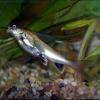Salmontail catfish - Arius leptaspis
Scientific name: Arius leptaspis
Common name: Salmontail catfish
Family: Ariidae
Usual size in fish tanks: 60 - 80 cm (23.62 - 31.5 inch)
014
Recommended pH range: 6.5 - 8
Recommended water hardness: 12 - 18°N (214.29 - 321.43ppm)
0°C 32°F30°C 86°F
Recommended temperature range: 20 - 30 °C (68 - 86°F)
The way how these fish reproduce: Spawning
Where the species comes from: Oceania
Temperament to its own species: peaceful
Temperament toward other fish species: aggressive to smaller
Usual place in the tank: Middle levels
Origin
Australia; found in the rivers and tributaries. These fish can also be found in tributaries from New Guinea.
Short description
Arius leptaspis can grow up to 32 inches, keeping these fish long term is not practically possible cue to the size of the tank required. It is advised that these fish should not be purchased unless you have a very large aquarium to house them when they reach their adult size. They will tolerate brackish or freshwater conditions and spend all day swimming up and down in the aquarium. Due to the fleshy make up of their skin it is advised that any gravel added to the aquarium should be rounded, any sharp edges will easily injure these fish and the wounds may lead to infections in the long term. Salmontail catfish are mostly nocturnal but care must be taken when handling them. They possess a sharp spine on their dorsal and pectoral fins; also they are covered with mucus that is irritating to the skin. Although the Salmontail Catfish is classed as peaceful, they will attempt to eat smaller tankmates and as they mature this problem will increase due to their large size.

 Jordans
Jordans  Shark
Shark